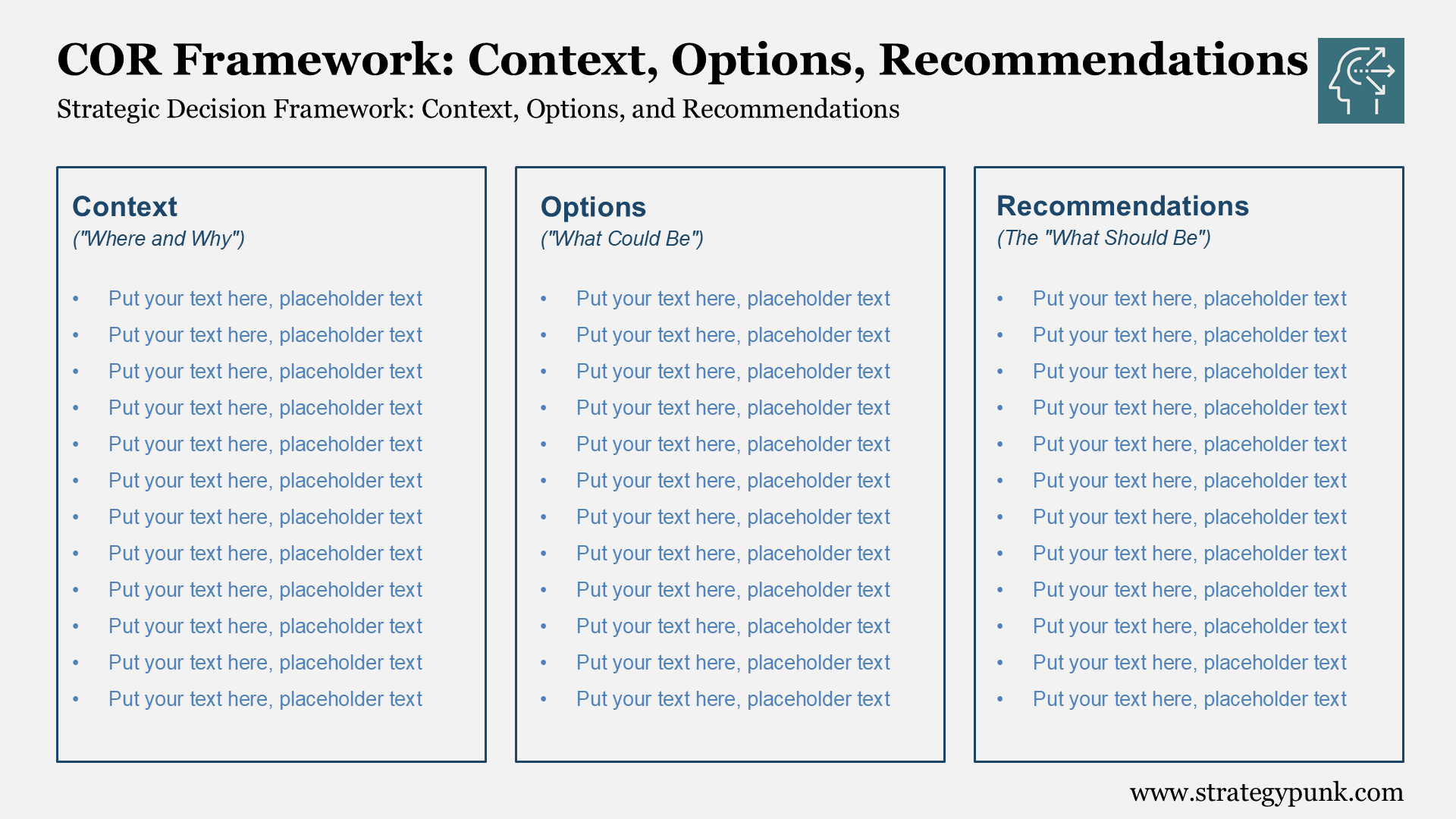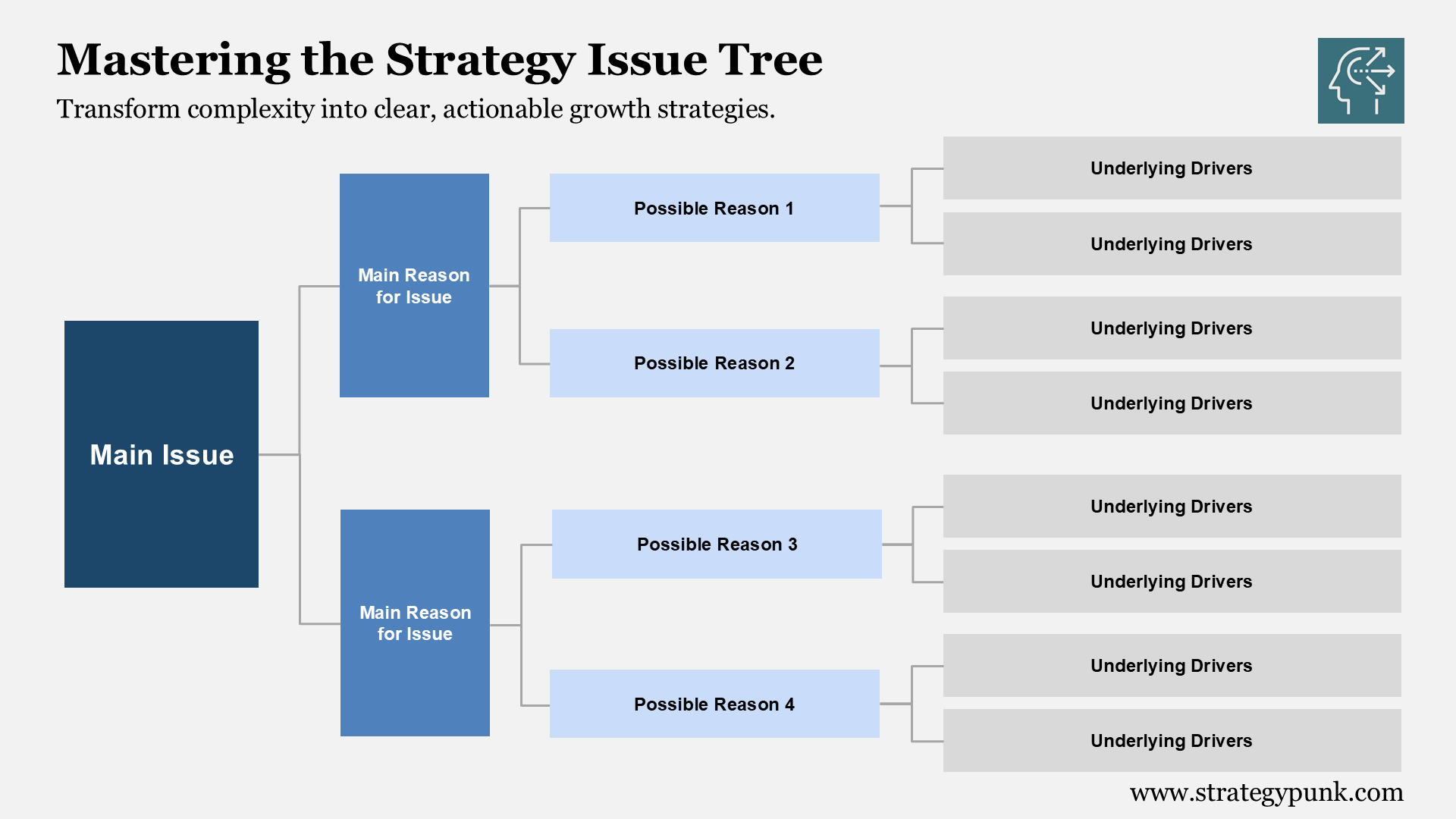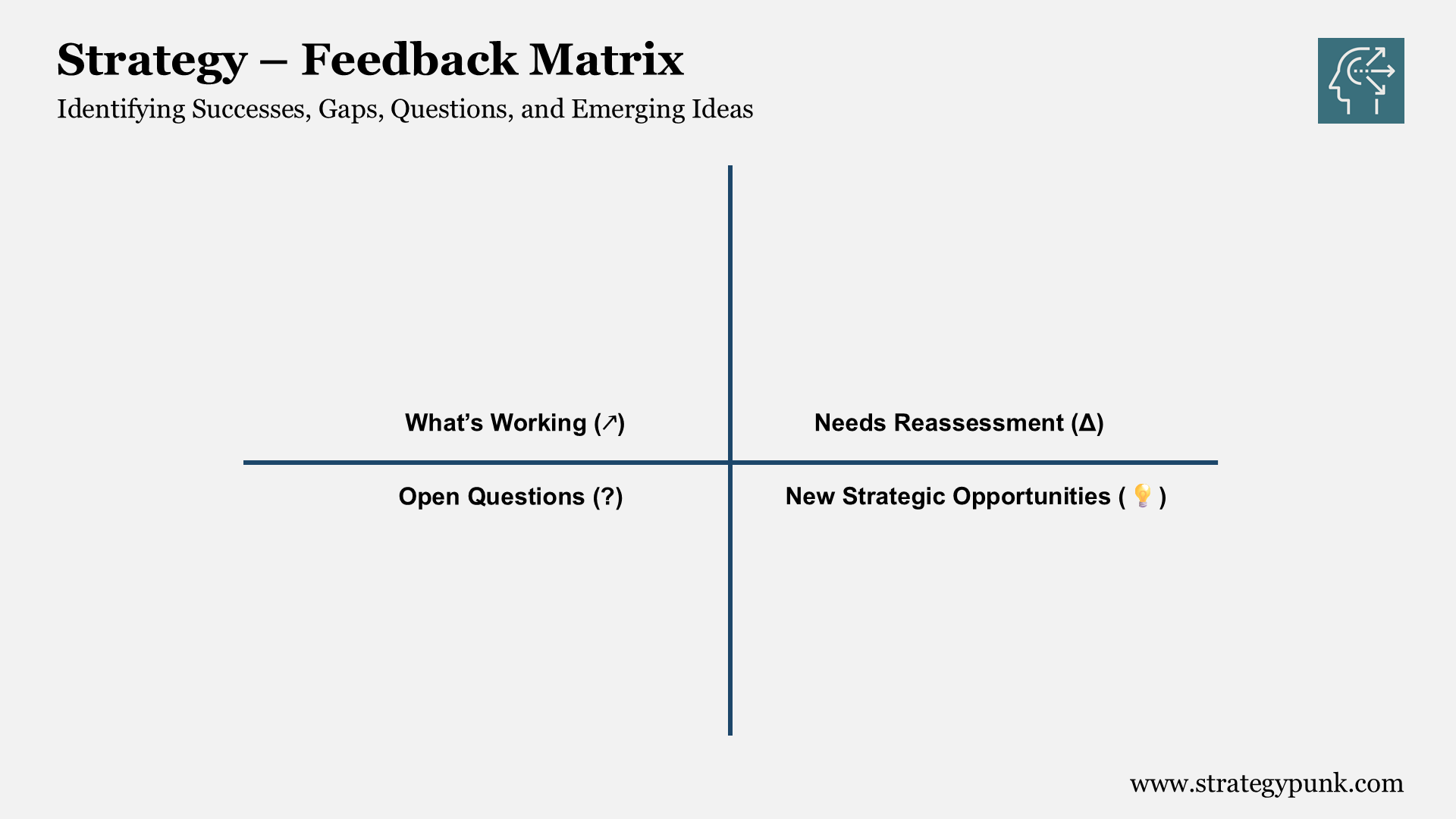Risk-Value-Cost-Effort (RVCE) Prioritization Matrix - A Practical Guide and Free PPT
Master project prioritization with our RVCE Matrix guide. Get your free PowerPoint template for effective risk, value, cost, and effort assessment in project management.
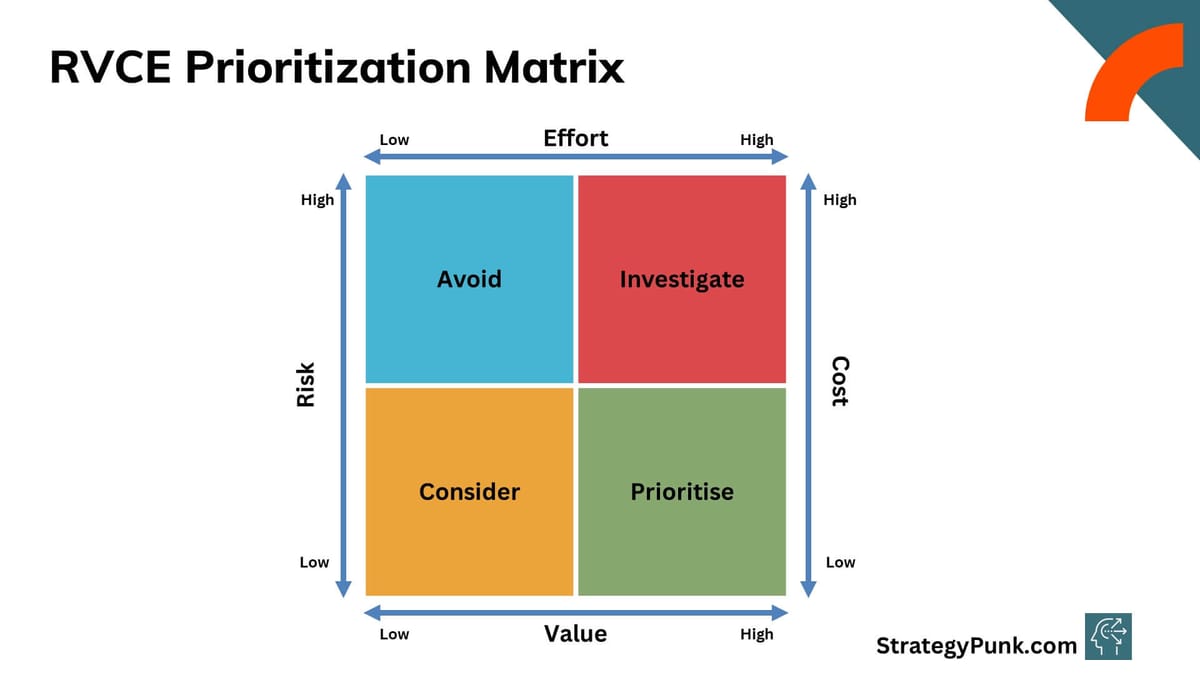
Introduction
We all have endless tasks and projects competing for our time and attention. The key is figuring out what matters most so you can focus your efforts accordingly.
A handy tool for cutting through the noise is the RVCE prioritization matrix.
In this practical guide, we’ll cover everything you need to know about the RVCE matrix, including:
- What is the Risk-Value-Cost-Effort Matrix?
- When Should You Use RVCE Prioritization?
- How to Create an RVCE Matrix Step-by-Step
- RVCE Matrix Examples and Templates
- Strengths and Limitations of the RVCE Approach
- Frequently Asked Questions
By the end of this guide, you’ll understand precisely how to leverage RVCE prioritization to spend time on what matters most.
The free PowerPoint and PDF templates can be downloaded at the end of the article.
Let’s get started!
What is the Risk-Value-Cost-Effort (RVCE) Matrix?
The RVCE matrix is a simple yet powerful prioritization model that helps you objectively evaluate tasks and projects based on four key criteria:
- Risk - The potential negative impact if a task is not completed
- Value - The potential positive impact if a task is completed
- Cost - The resources and effort required to complete the task
- Ease - The level of difficulty or complexity involved
Using an RVCE matrix allows you to score your tasks or initiatives on a scale of 1 to 5 based on these four factors.
By multiplying these scores, you end up with an overall priority score. The higher the score, the higher the priority.
This method provides an objective view of all your competing priorities so you can thoughtfully evaluate tradeoffs and align activities to goals.
Rather than relying on the gut instinct of what’s “most urgent,” you have an evidence-based system for prioritizing what will drive the most impact or mitigate the most significant risks.
When Should You Use RVCE Prioritization?
RVCE prioritization delivers the most value when you need to:
- Compare Tasks Across Different Projects—RVCE allows managers or teams juggling multiple projects to evaluate and compare tasks objectively, even if they have very different goals. You can quickly identify dependencies and sequencing needs.
- Break Vague Goals Down Into Next Steps – If you have an ambitious goal you want to tackle, using an RVCE matrix helps break it down into concrete next steps you can execute. This makes significant initiatives feel much more manageable.
- Justify and Communicate Priorities – When presenting plans to executives or stakeholders, the RVCE approach allows you to communicate what activities you’ll tackle first and why using solid criteria. This builds confidence in your direction and decision-making.
- Divide and Conquer Work Across Teams – Managers can use the RVCE scores from individual teams to divide and assign work packages for cross-functional initiatives. This helps balance workload more equitably across groups based on their capacity and expertise.
- Overwhelmed by Competing Priorities – When you have an overflowing plate, and every task feels urgent, the RVCE matrix brings structure. Identifying the projects with the best risk-value tradeoffs means focusing time on the things that matter most.
What makes RVCE so valuable is it combines the quantitative and the qualitative. Criteria like risk, effort, and impact, which are hard to compare, are all translated to numbers for easy comparison. This removes personal bias and gut instinct.
Now, let’s walk through how to implement this powerful prioritization tool...
How to Create an RVCE Matrix
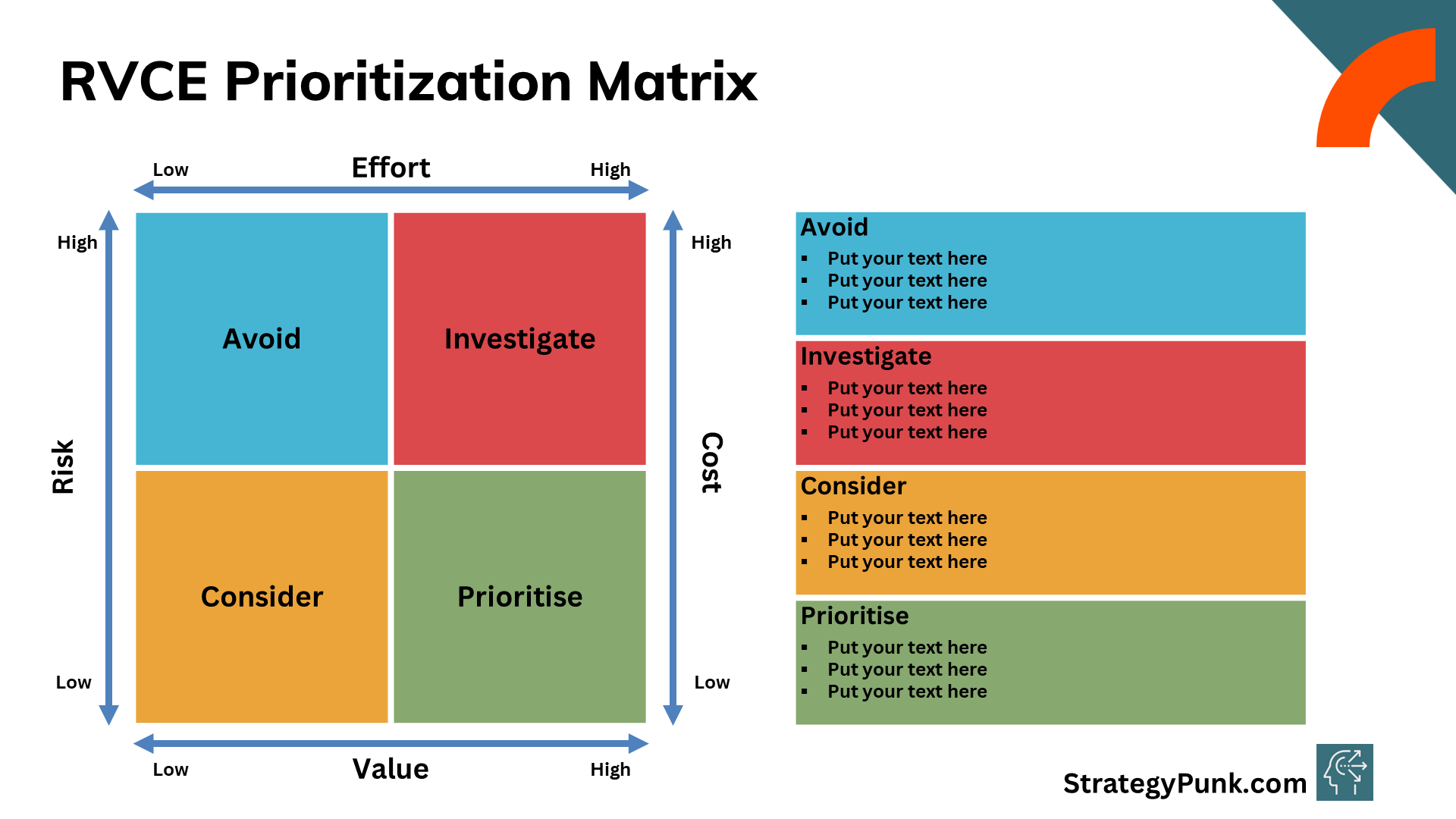
Step 1: List Out All Tasks/Projects
You can start by brainstorming all the current projects, tasks, ideas, or initiatives you want to prioritize. The beauty of the RVCE approach is it works for strategic long-term goals down to daily to-do list items. Get everything out of your head and onto a master list. We recommend grouping them by common goals or categories to make scoring easier.
Step 2: Define Your Criteria
By default, RVCE uses the four core criteria of Risk, Value, Cost, and Ease. But you can customize these criteria to fit your situation best. Common adjustments include:
- Using Effort instead of Cost
- Separating Costs into Money and Resources
- Replacing Ease with Time or Speed
The most important thing is choosing criteria that help you evaluate relevant tradeoffs. Could you make sure to define each criterion before scoring clearly?
Step 3: Score Each Task 1-5 for Each Criterion
Now comes the fun part – scoring! Assign every task or project a score from 1 to 5 (1 = lowest, 5 = highest) for each criterion using your defined criteria. This allows you to translate qualitative data into comparable quantitative scores.
When scoring, don’t overthink it. Go with your gut instinct to decide what feels like the best fit.
Step 4: Multiply Scores to Get Overall Priority
With your component scores filled in, it’s time for the magic. Multiply the scores for each task to get its overall priority rating.
Risk x Value x Cost x Ease = Overall Priority Score: The higher this overall score, the higher the priority and importance of completing that task.
Step 5: Sort by Priority Rating
Finally, sort all your listed tasks in descending order based on their overall priority rating. You should tackle the top tasks first.
Voila! You now have an evidence-backed, objective way to prioritize projects and tasks rather than relying on a gut feeling of what seems most urgent.
Tips for Scoring Your Tasks
With practice, RVCE scoring becomes second nature. But here are some tips as you’re getting started:
- Use 1, 3, and 5 scores most often for clear high, medium, and low signals
- Tie scores when multiple tasks are equal for a particular attribute
- Re-score periodically as priorities shift and change over time
- Involve team members in different perspectives when possible
- Trust the output even if it doesn’t match your intuition
The RVCE matrix works best when you thoughtfully assess each criterion per task. Avoid the temptation to shortcut and batch score items together.
If some tasks end up with very similar priority ratings, use your judgment to sequence them in a logical order. The RVCE approach gets you 80% there but leaves room to apply your expertise.
Now let’s look at some examples...
Strengths and Limitations of RVCE Prioritization
Like any methodology, the RVCE matrix has both pros and cons. Being aware of these upfront helps make sure you use this tool effectively.
Strengths of RVCE Matrices:
- Provides objective scoring to remove personal bias
- Allows comparison of diverse tasks and projects
- Easy to communicate priorities to stakeholders
- Highlights dependencies and risks that need coordination
- Fosters discussion when creating scores collaboratively
- Simple concept with flexible implementation
Limitations of RVCE Scoring:
- Still somewhat subjective based on the individual
- It is hard to quantify specific qualitative measures
- Results are only as good as the criteria and inputs
- Scoring requires regular maintenance as priorities shift
- Requires buy-in and participation to be effective
The key is to view RVCE as something other than a silver bullet. But instead as a valuable input into your decision-making and planning processes. It provides helpful structure when tackling an overflowing workload with unclear tradeoffs.
The RVCE matrix provides an invaluable structure for tackling an overflowing workload with unclear tradeoffs. You can use this comprehensive guide to leverage RVCE prioritization and focus your precious time on the projects that deliver maximum impact.
Frequently Asked Questions
Let’s wrap up by addressing some common questions about the RVCE matrix:
How is RVCE different than other prioritization models?
RVCE differs from other frameworks like RICE (reach, impact, confidence, effort) or ICE (impact, confidence, ease), including risk as a critical criterion. This allows you to surface showstopper dependencies required for a task to meet downstream needs.
Who should build and maintain the RVCE matrix?
Typically, managers or team leads create the initial matrix and score based on their vantage point. However, it's critical to socialize with the broader team and incorporate their perspectives before finalizing priorities.
How often should the RVCE matrix be updated?
Could you revise your RVCE matrix at least every quarter as a formal checkpoint? But also re-score in real-time if urgent new tasks emerge or priorities get deferred. The scores are not set in stone but are input to guide work allocation.
Can the RVCE approach be manipulated?
Like any system, leaders can intentionally skew criteria and scores to justify pet projects or predetermined priorities. That's why fostering transparency is important: sharing the full matrix with stakeholders when setting direction.
Risk-Value-Cost-Effort (RVCE) Prioritization Matrix
free PDF and PPT Template
Get Organized with Free RVCE Matrix Templates
Do you need help to prioritize your growing workload?
You can get your tasks in order with our free RVCE matrix templates.
The RVCE (Risk-Value-Cost-Effort) matrix is a versatile prioritization tool to help you objectively score and rank tasks by multiple criteria.
This lets you align activities to goals and tackle the most impactful work first.
We’re offering a helpful RVCE matrix template pack so you can start prioritizing more effectively. We’re offering a helpful RVCE matrix template pack so you can prioritize more effectively.
RVCE Matrix PDF & PowerPoint Template – Presentation design with RVCE matrix layouts and charts to visually communicate priorities.
Access is simple – subscribe below and download the template immediately.


Risk-Value-Cost-Effort (RVCE) Prioritization Matrix - PowerPoint Templates


